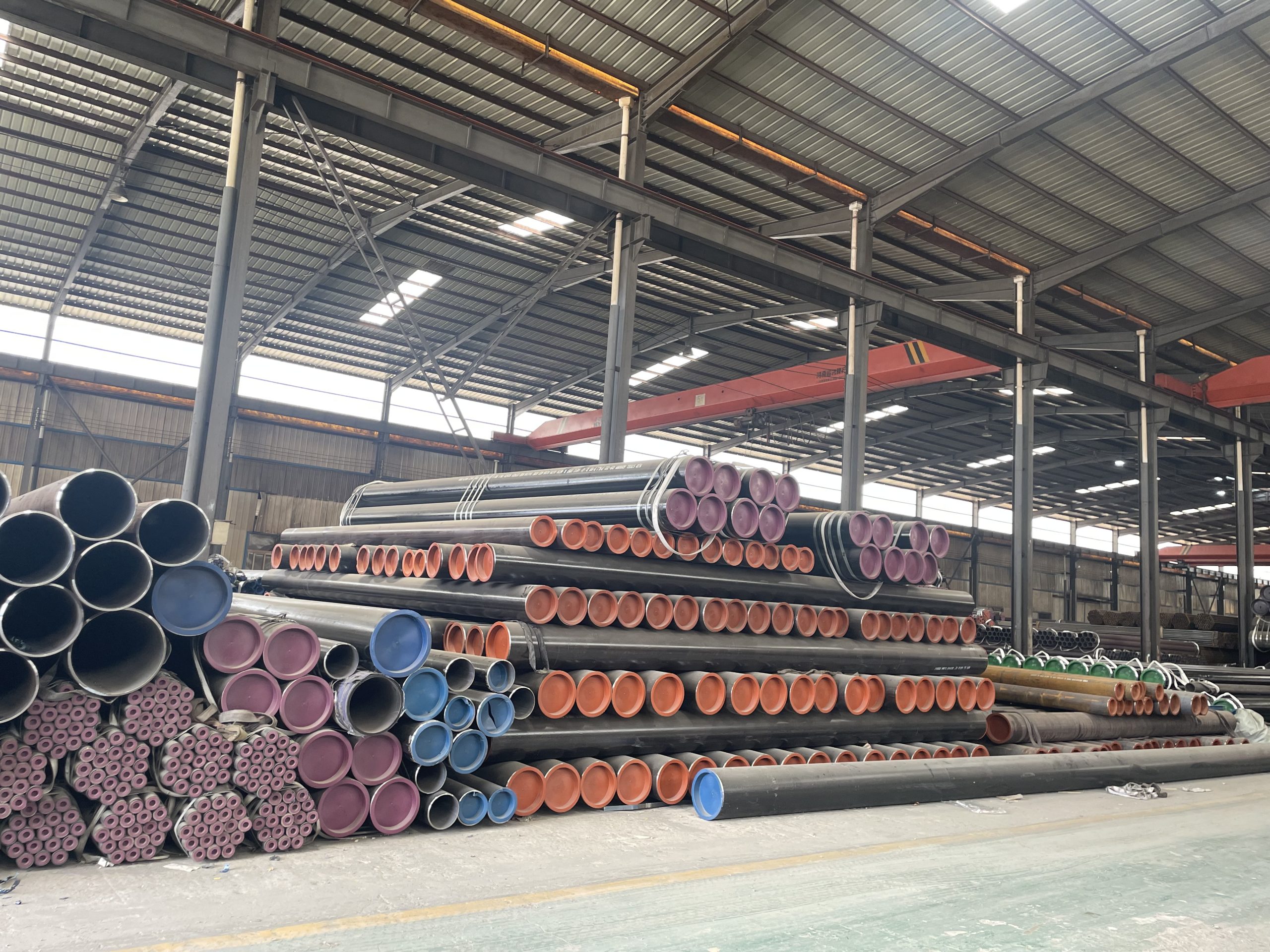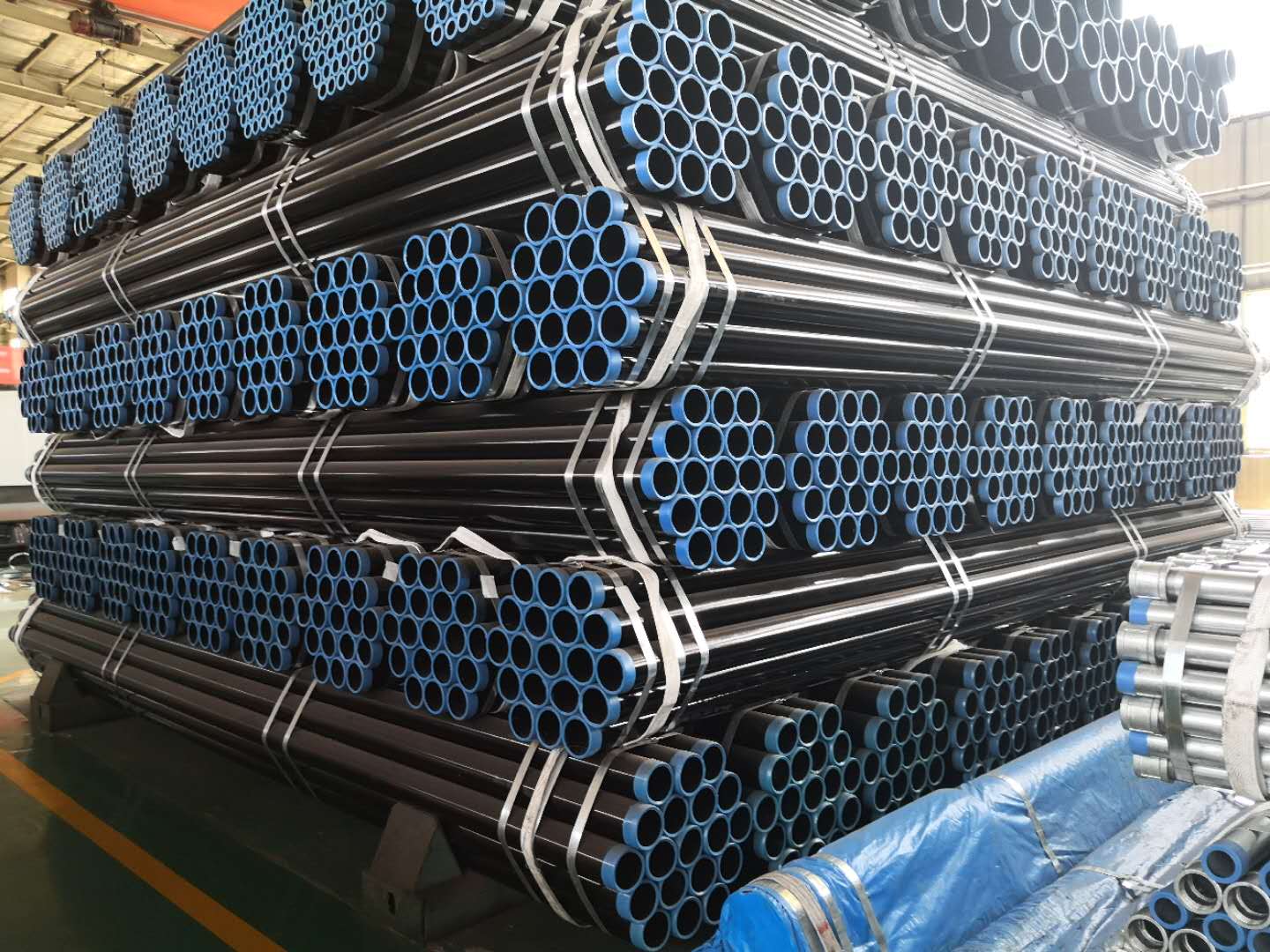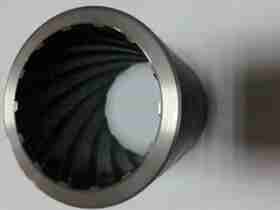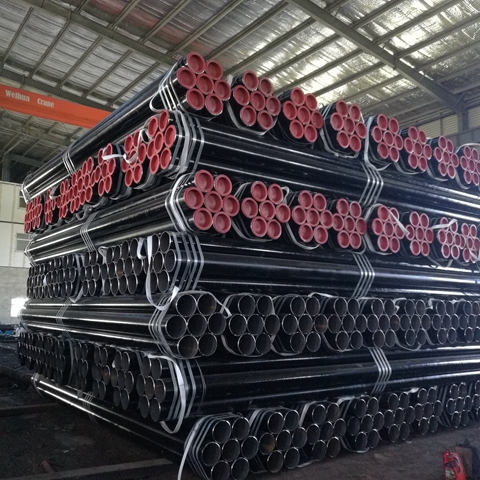مزايا استخدام الأنابيب الفولاذية ERW في عمليات حفر النفط
الإختلافات الرئيسية بين الأنابيب الفولاذية غير الملحومة وأنابيب الصلب المتفجرة من مخلفات الحرب المستخدمة في تغليف النفط وتطبيقات الحفر

تتطلب عمليات حفر النفط وضخ الآبار أنابيب فولاذية عالية الجودة يمكنها تحمل الظروف والضغوط القاسية. هناك نوعان شائعان من الأنابيب الفولاذية المستخدمة في هذه التطبيقات هما الأنابيب غير الملحومة وأنابيب ERW (الملحومة بالمقاومة الكهربائية). في حين أن كلا النوعين يخدمان أغراضًا مماثلة، إلا أن هناك اختلافات رئيسية بينهما يمكن أن تؤثر على أدائهما في عمليات تغليف النفط والحفر.
يتم تصنيع الأنابيب الفولاذية غير الملحومة عن طريق ثقب قطعة صلبة من الفولاذ لإنشاء أنبوب مجوف. تؤدي هذه العملية إلى سطح أملس وموحد بدون أي طبقات أو لحامات. تُعرف الأنابيب غير الملحومة بقوتها ومتانتها، مما يجعلها مثالية لتطبيقات الضغط العالي مثل التنقيب عن النفط. يؤدي غياب اللحامات في الأنابيب غير الملحومة إلى التخلص من مخاطر نقاط الضعف التي يمكن أن تؤثر على سلامة الأنابيب في ظل الظروف القاسية. في حين أن عملية اللحام تقدم درزًا على طول الأنبوب، فقد أدت تقنيات اللحام الحديثة إلى تحسين قوة وموثوقية أنابيب المتفجرات من مخلفات الحرب بشكل كبير. تعد أنابيب المتفجرات من مخلفات الحرب (ERW) بشكل عام أكثر فعالية من حيث التكلفة في الإنتاج من الأنابيب غير الملحومة، مما يجعلها خيارًا شائعًا للتطبيقات الأقل تطلبًا حيث لا يشكل الضغط العالي مصدر قلق. . يتم إنتاج الأنابيب غير الملحومة عن طريق الدرفلة على الساخن أو السحب على البارد، مما يؤدي إلى بنية حبيبية موحدة تعزز قوة ومتانة الأنابيب. في المقابل، يتم إنشاء أنابيب المتفجرات من مخلفات الحرب عن طريق لحام شرائح متعددة من الفولاذ معًا، مما قد يؤدي إلى اختلافات في بنية الحبوب على طول الأنبوب. في حين أن تقنيات اللحام الحديثة قد قللت من تأثير هذه الاختلافات، إلا أن الأنابيب غير الملحومة لا تزال تتمتع بخصائص ميكانيكية فائقة. تُعرف الأنابيب غير الملحومة بأبعادها الدقيقة وتفاوتاتها الصارمة، مما يجعلها مثالية للتطبيقات التي يكون فيها الملاءمة والمحاذاة الدقيقة أمرًا بالغ الأهمية. من ناحية أخرى، قد يكون لأنابيب المتفجرات من مخلفات الحرب اختلافات طفيفة في القطر وسمك الجدار بسبب عملية اللحام. في حين أن هذه الاختلافات عادة ما تكون ضمن الحدود المقبولة، إلا أنها يمكن أن تؤثر على أداء الأنابيب في تطبيقات معينة.
من حيث التوافر والتكلفة، تكون أنابيب المتفجرات من مخلفات الحرب متاحة بشكل عام بسهولة أكبر وفعالة من حيث التكلفة من الأنابيب غير الملحومة. تتيح عملية التصنيع الأبسط لأنابيب المتفجرات من مخلفات الحرب زيادة حجم الإنتاج وخفض تكاليف الإنتاج، مما يجعلها خيارًا فعالاً من حيث التكلفة للعديد من التطبيقات. من ناحية أخرى، يعد إنتاج الأنابيب غير الملحومة أكثر تكلفة نظرًا لخطوات المعالجة الإضافية التي ينطوي عليها إنشاء أنبوب غير ملحوم وموحد. تطبيقات الغلاف والحفر. تُعرف الأنابيب غير الملحومة بقوتها الفائقة ومتانتها ودقة أبعادها، مما يجعلها مثالية لتطبيقات الضغط العالي حيث تكون الدقة والموثوقية أمرًا بالغ الأهمية. من ناحية أخرى، توفر أنابيب المتفجرات من مخلفات الحرب بديلاً فعالاً من حيث التكلفة للتطبيقات الأقل تطلبًا حيث لا يشكل الضغط العالي مصدر قلق. في نهاية المطاف، سيعتمد الاختيار بين الأنابيب الفولاذية غير الملحومة وأنابيب الصلب المتفجرة من مخلفات الحرب على المتطلبات المحددة للتطبيق وقيود ميزانية المشروع.
Key Differences Between Seamless and ERW steel Tubes for Oil casing and Drilling Applications
Oil drilling and well pumping operations require high-quality steel Tubing that can withstand extreme conditions and pressures. Two common types of steel tubing used in these applications are seamless and ERW (Electric Resistance Welded) tubes. While both types serve similar purposes, there are key differences between them that can impact their performance in oil casing and drilling operations.
Seamless steel tubes are manufactured by piercing a solid billet of steel to create a hollow tube. This process results in a smooth, uniform surface without any seams or welds. Seamless tubes are known for their strength and durability, making them ideal for high-pressure applications such as oil drilling. The absence of welds in seamless tubes eliminates the risk of weak points that could compromise the integrity of the tubing under extreme conditions.
On the other hand, ERW steel tubes are created by Welding together strips of steel to form a tube. While the welding process introduces a seam along the Length of the tube, modern welding techniques have significantly improved the strength and reliability of ERW tubes. ERW tubes are generally more cost-effective to produce than seamless tubes, making them a popular choice for less demanding applications where high pressure is not a concern.
38mm square tubingOne of the key differences between seamless and ERW steel tubes is their manufacturing process. Seamless tubes are produced by Hot rolling or cold drawing, which results in a uniform grain structure that enhances the strength and toughness of the tubing. In contrast, ERW tubes are created by welding together multiple strips of steel, which can introduce variations in the grain structure along the length of the tube. While modern welding techniques have minimized the impact of these variations, seamless tubes are still considered to have superior Mechanical properties.
Another important difference between seamless and ERW steel tubes is their dimensional accuracy. Seamless tubes are known for their precise dimensions and tight tolerances, which make them ideal for applications where precise fit and alignment are critical. ERW tubes, on the other hand, may have slight variations in diameter and Wall thickness due to the welding process. While these variations are typically within acceptable limits, they can impact the performance of the tubing in certain applications.
In terms of availability and cost, ERW tubes are generally more readily available and cost-effective than seamless tubes. The simpler manufacturing process of ERW tubes allows for higher production volumes and lower production costs, making them a cost-effective option for many applications. Seamless tubes, on the other hand, are more expensive to produce due to the additional processing steps involved in creating a seamless, uniform tube.
In conclusion, both seamless and ERW steel tubes have their own advantages and disadvantages when it comes to oil casing and drilling applications. Seamless tubes are known for their superior strength, durability, and dimensional accuracy, making them ideal for high-pressure applications where precision and reliability are paramount. ERW tubes, on the other hand, offer a cost-effective alternative for less demanding applications where high pressure is not a concern. Ultimately, the choice between seamless and ERW steel tubes will depend on the specific requirements of the application and the budget constraints of the project.




